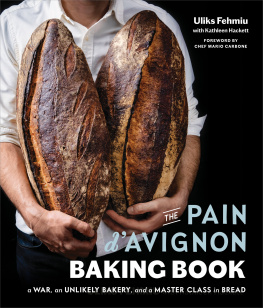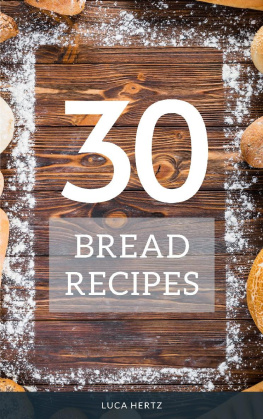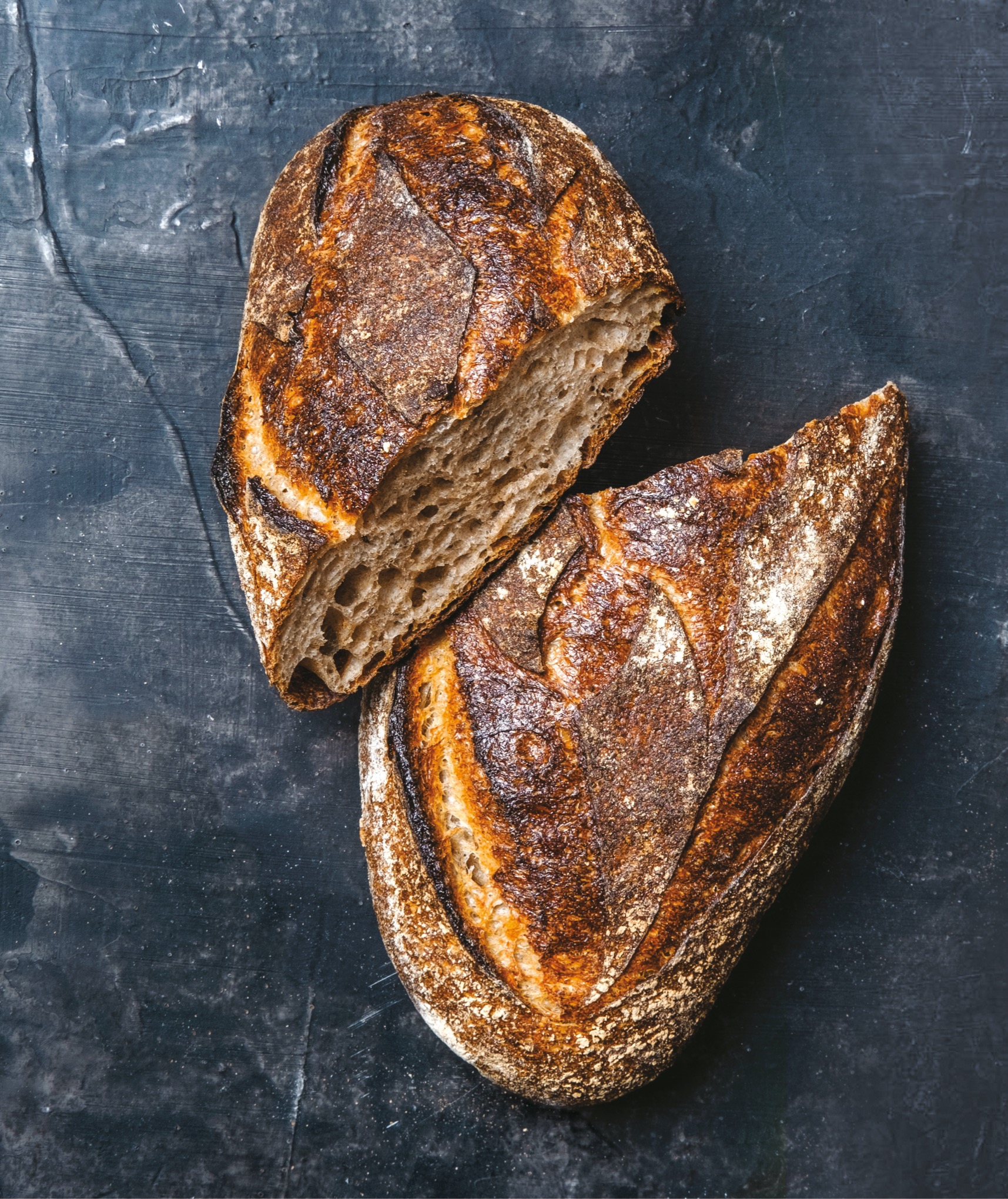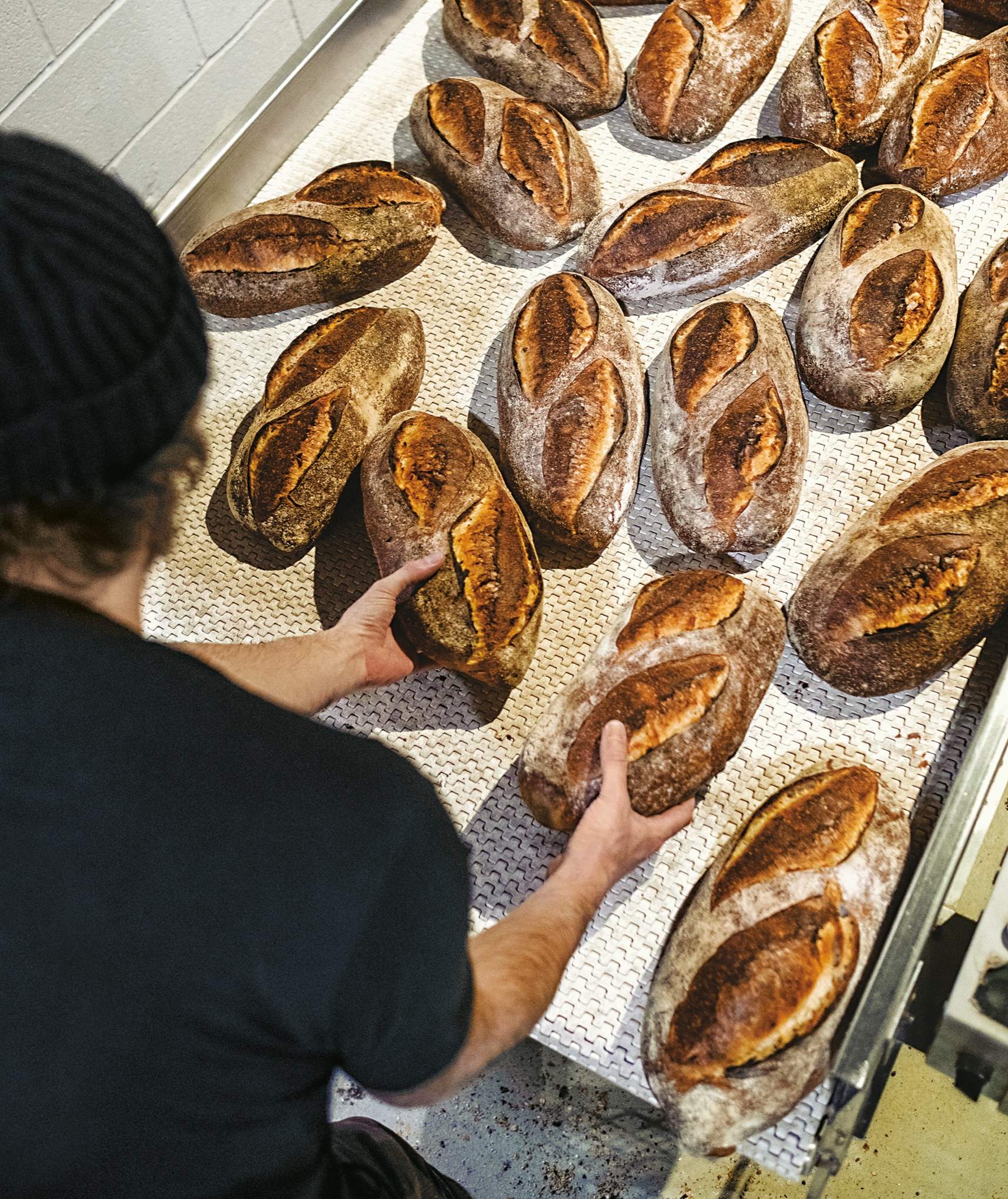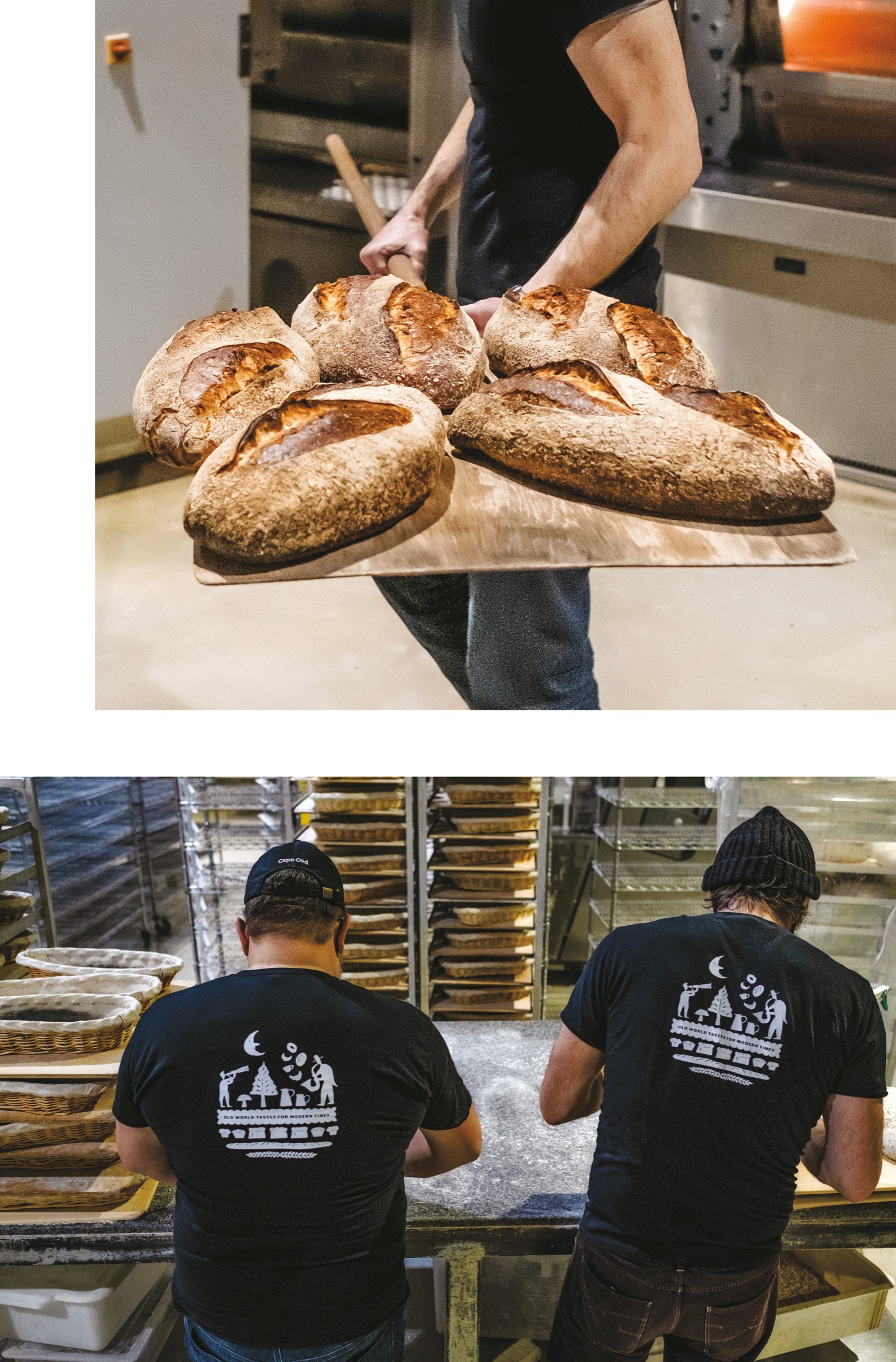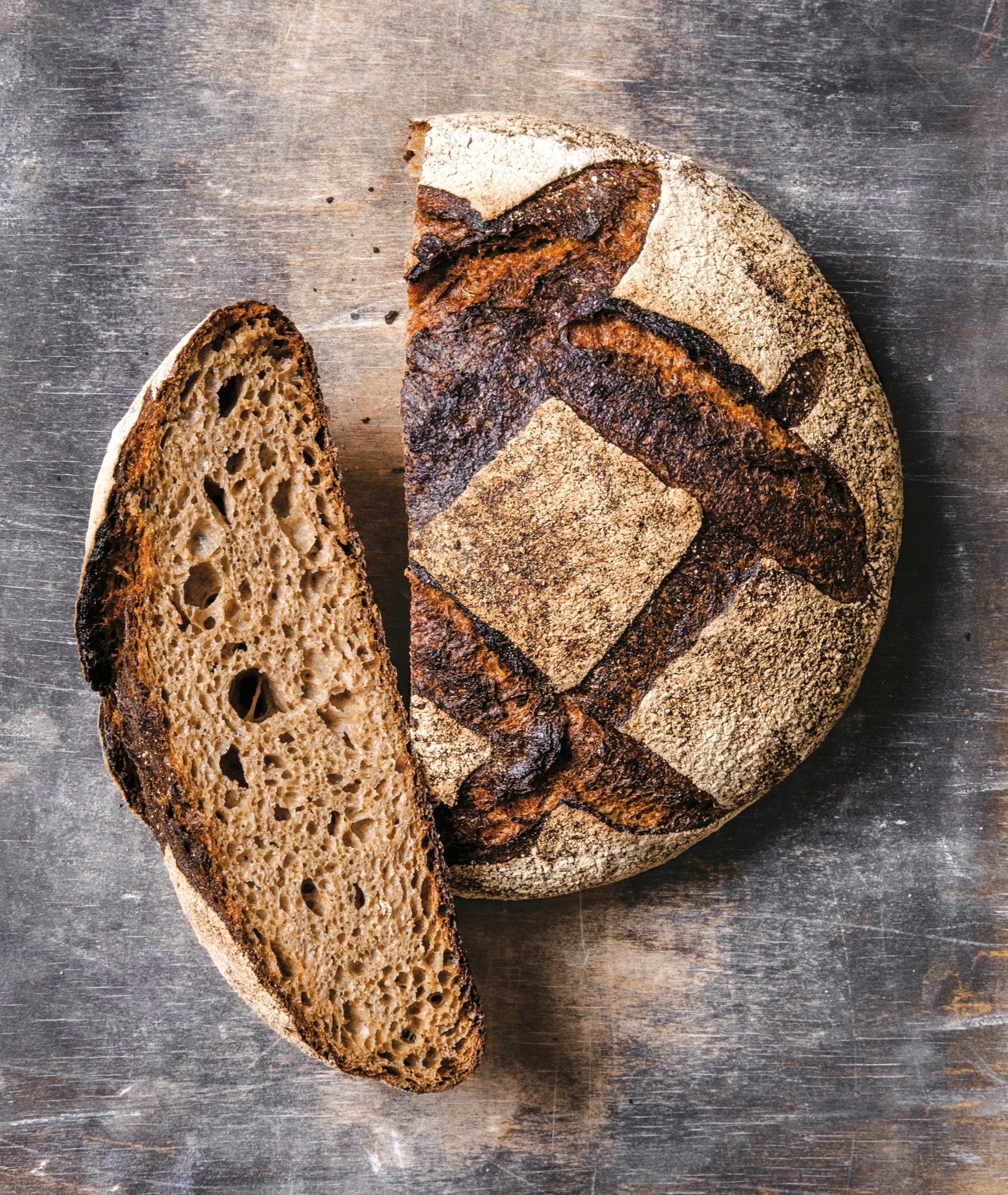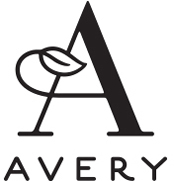
an imprint of Penguin Random House LLC
penguinrandomhouse.com
Copyright 2022 by Uliks Fehmiu
Penguin Random House supports copyright. Copyright fuels creativity, encourages diverse voices, promotes free speech, and creates a vibrant culture. Thank you for buying an authorized edition of this book and for complying with copyright laws by not reproducing, scanning, or distributing any part of it in any form without permission. You are supporting writers and allowing Penguin Random House to continue to publish books for every reader.
Photographs by Ed Anderson
Illustrations by Jeffrey Fisher for Caf dAvignon
Story illustrations by David Polonsky
Caf dAvignon branding by Mucca Design
Library of Congress Cataloging-in-Publication Data
Names: Fehmiu, Uliks, author. | Hackett, Kathleen, author. | Carbone, Mario, writer of foreword.
Title: The Pain dAvignon baking book: a war, an unlikely bakery, and a master class in bread / Uliks Fehmiu with Kathleen Hackett; foreword by chef Mario Carbone.
Description: [New York]: Avery, an imprint of Penguin Random House LLC, [2022] | Includes index.
Identifiers: LCCN 2022004400 (print) | LCCN 2022004401 (ebook) | ISBN 9780525536116 (hardcover) | ISBN 9780525536123 (epub)
Subjects: LCSH: Cooking (Bread). | Pastry. | Baking. | Pain DAvignon (Bakery) | LCGFT: Cookbooks.
Classification: LCC TX769.F44 2022 (print) | LCC TX769 (ebook) | DDC 641.81/5dc23/eng/20220201
Book design by Ashley Tucker, adapted for ebook by Estelle Malmed
The recipes contained in this book have been created for the ingredients and techniques indicated. The Publisher is not responsible for your specific health or allergy needs that may require supervision. Nor is the Publisher responsible for any adverse reactions you may have to the recipes contained in the book, whether you follow them as written or modify them to suit your personal dietary needs or tastes.
pid_prh_6.0_141460497_c0_r0
For those who left their homes in search of a better life
CONTENTS
FOREWORD
At certain restaurants, theres a story behind every detail. You cant expect the audience to notice all of the choices, because thats not the point. You just hope that the thought, sweat, and care conspire to make them feel something.
On that note, Id like to tell you about an unassuming-looking dark bread Pain dAvignon bakes for The Grill, a restaurant in Manhattan I run with my friends Rich and Jeff.
Five years ago, the three of us got the chance to take charge of the dining rooms at the Seagram Building, the only landmarked restaurant interiors in New York City. It was the biggest moment of our careers. We knew that if The Grill, our new concept for the space, was going to draw inspiration from Americas culinary history, we had better do our homework. We spent a year combing through archives and calling on scholars and experts. We drove to antiques shops around the country. We made dishes like venison Cumberland that probably hadnt shown up on a restaurant menu in over fifty years.
After we fine-tuned, we fine-tuned some more. Even the bread basketa custom that few restaurants embrace nowadayswas a major priority. Specifically, we wanted to re-create the anadama loaf Id read about on one of those long days at the New York Public Library. A combination of wheat, cornmeal, and molasses, this yeast bread started popping up in New England bakeries around the mid-1800s.
How could we make the best version possible?
Bane at Pain dAvignon NYC was the only person I considered for the job. He had proven himself to us before, big time, when he developed the sesame roll that is the backbone of our casual red-sauce spot, Parm. That is correct: An Italian American kid from Queens asked a guy from the former Yugoslavia to make the bread for his sandwich shop, and it turned out perfect.
For the anadama, Bane honored the source material while stealthily incorporating a few modern techniques to up its flavor and shelf life. He didnt just replicate a recipe; he nudged a tradition forward. Ill leave it to him, Uliks, and the rest of the Pain dAvignon team to tell you all about that process in this tremendous book, of which the anadama is only a small part.
With warmth and clarity, they give away all of their knowledge: the techniques behind the croissants, the quiches, the escargots, the baguettes. Everything. As if that werent enough, they spin one hell of a narrative, about fleeing war, finding a new home, and mastering an ancient craft, all while giving space to the stories of the people who make up the fabric of Pain dAvignon, many of whom are also immigrants.
The average customer picking up a pastry would probably have no idea about any of thiswhich brings me back to what I was trying to say at the top.
When a vision resonates, there are probably many more reasons than meet the eye.
Mario Carbone
THE CAST
Branislav (Bane) Stamenkovi friends since the age of seven; cofounder of Pain dAvignon, runs the New York City branch
Vojin Vujoevi friends since the age of eight; cofounder of Pain dAvignon, runs the Cape Cod branch
Igor Ivanovi met him when he was fourteen; cofounder of Pain dAvignon, owner of Iggys Bread in Cambridge, Massachusetts, and Iggys Down Under in Sydney, Australia
Toma Stamenkovi Banes brother; met him when I met Bane; Pain dAvignon partner, runs the Cape Cod branch
Teofil (Tole) Zurovac met him when he was twenty-three; Pain dAvignon partner, runs the New York City branch

